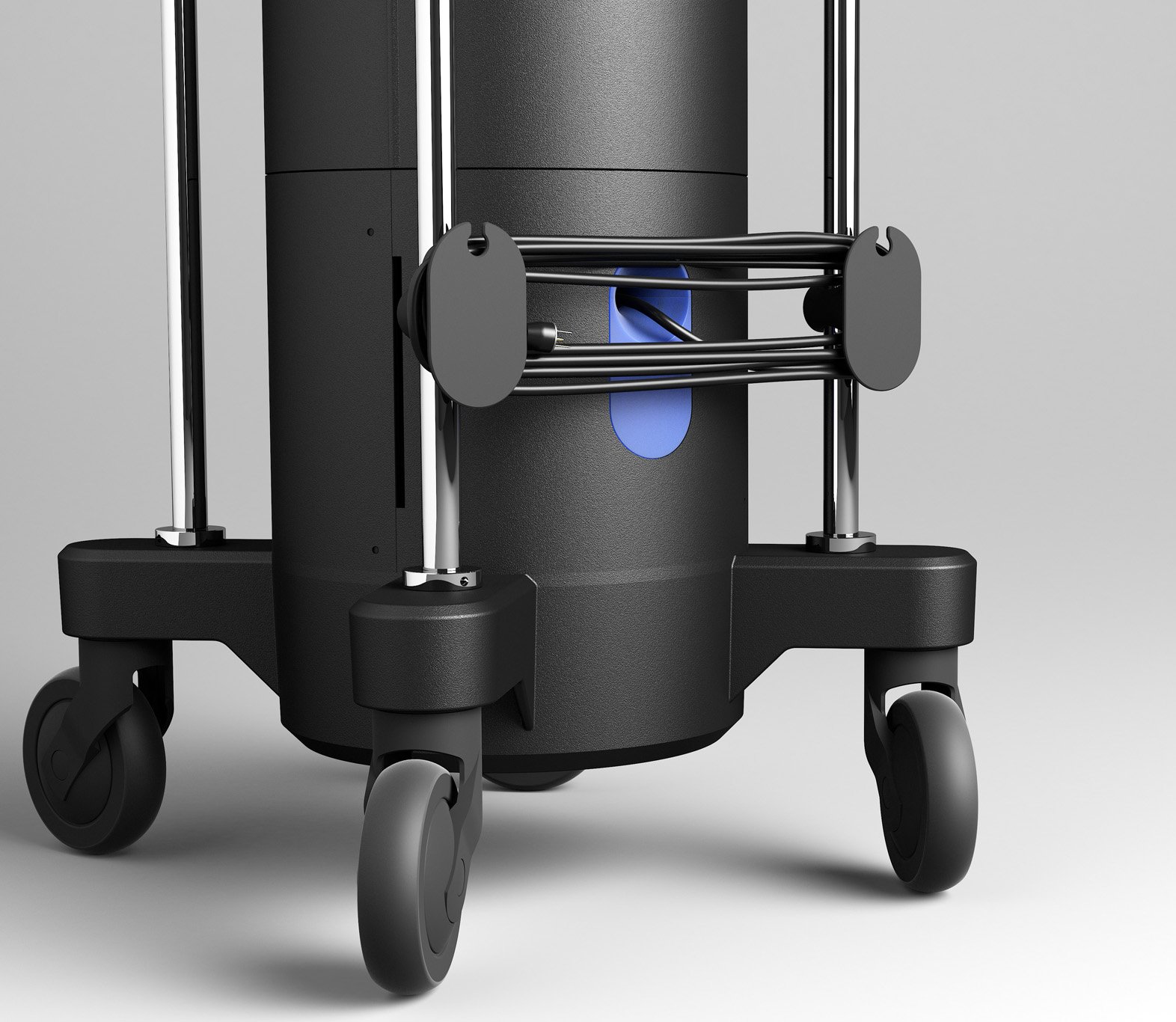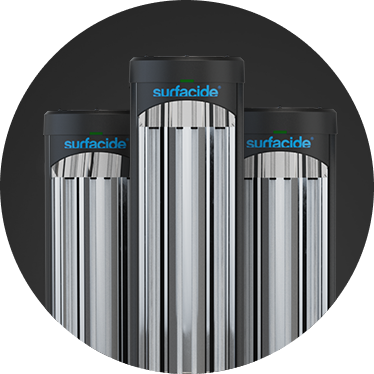In recent years, UVC (Ultraviolet-C) robots have emerged as a revolutionary technology in the battle against harmful pathogens. These robots employ the power of ultraviolet light to disinfect surfaces and sanitize environments. Surfacide’s Helios emitters are among the leading options on the market, notable for their multiple configurations and short cycle times to achieve high-touch surface microbial reduction, while many others are battery-operated, which have their drawbacks. In this post, we’ll explore the advantages and drawbacks of both battery-operated and corded UVC robots.
Battery-Operated UVC Robots:
Pros:
- Flexibility and Mobility: Battery-operated UVC robots offer the flexibility of being cordless, not requiring access to an electrical outlet.
Cons:
- Reliability: Battery-powered robots may suffer from reliability issues. They are only as effective as their battery life, and once the battery is depleted, the robot becomes useless until it’s recharged.
- Limited Energy Storage or Run Time: The runtime of battery-operated UVC robots is restricted by the capacity of their batteries. Longer microbial reduction tasks might require multiple recharges or battery replacements.
- Charging Time: Recharging the batteries can be time-consuming. This downtime might be impractical in settings where continuous microbial reduction is required.
- Energy Loss While Operating: Battery-operated robots gradually lose energy as they work, which can impact the consistency and effectiveness of the microbial reduction process.
- Performance Declines Over Time: The performance of the UVC output can diminish as the battery ages, necessitating costly battery replacements to maintain effectiveness.
- Battery Disposal: Dealing with used batteries can pose environmental challenges. Proper disposal and recycling of old batteries are necessary, adding to the operational costs.
- UV-C Output Limitations: The UVC output is limited by the energy the battery can generate. This limitation may affect the robot’s ability to tackle larger or more demanding microbial reduction tasks.
Corded UVC Robots (e.g., Surfacide’s Helios Emitters):
Pros:
- Consistent Power: Corded UVC robots are connected to electrical outlets, ensuring a constant and uninterrupted power supply. This consistency is crucial for thorough and reliable microbial reduction.
- Higher Energy Capacity: Corded robots have higher energy capacity, allowing them to handle more demanding microbial reduction tasks without the risk of running out of power.
- Can Handle More Demanding Tasks: Corded UVC robots are better suited for environments that require frequent and extended microbial reduction procedures, such as hospitals or commercial spaces.
- Reduced Carbon Footprint: As corded robots do not rely on disposable batteries, they have a lower environmental impact and reduce the need for battery manufacturing and disposal.
- Slim Profile – 17.5 inch diameter – allows Helios to fit in tight spaces that battery powered devices cannot
Cons:
- Limited Mobility: Corded UVC robots are tethered to electrical outlets, which limits their mobility compared to their battery-operated counterparts.
In conclusion, as you prioritize reliable and powerful microbial reduction, corded UVC robots, such as Surfacide’s Helios emitters, may be the better choice. They not only offer superior performance but also contribute to a more sustainable and eco-friendly approach to microbial reduction. Ultimately, the decision should align with your commitment to providing a safe and sanitized environment.






